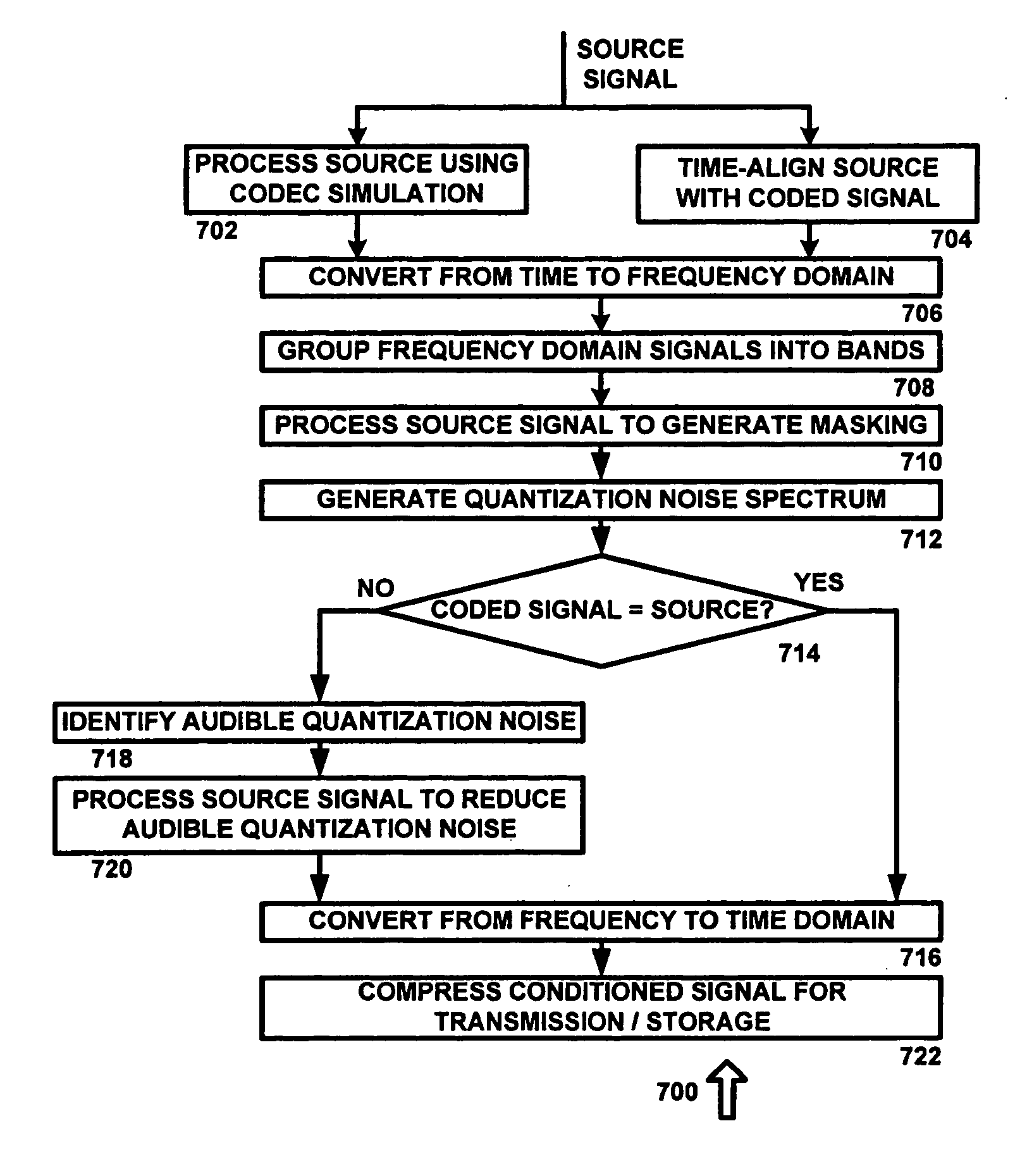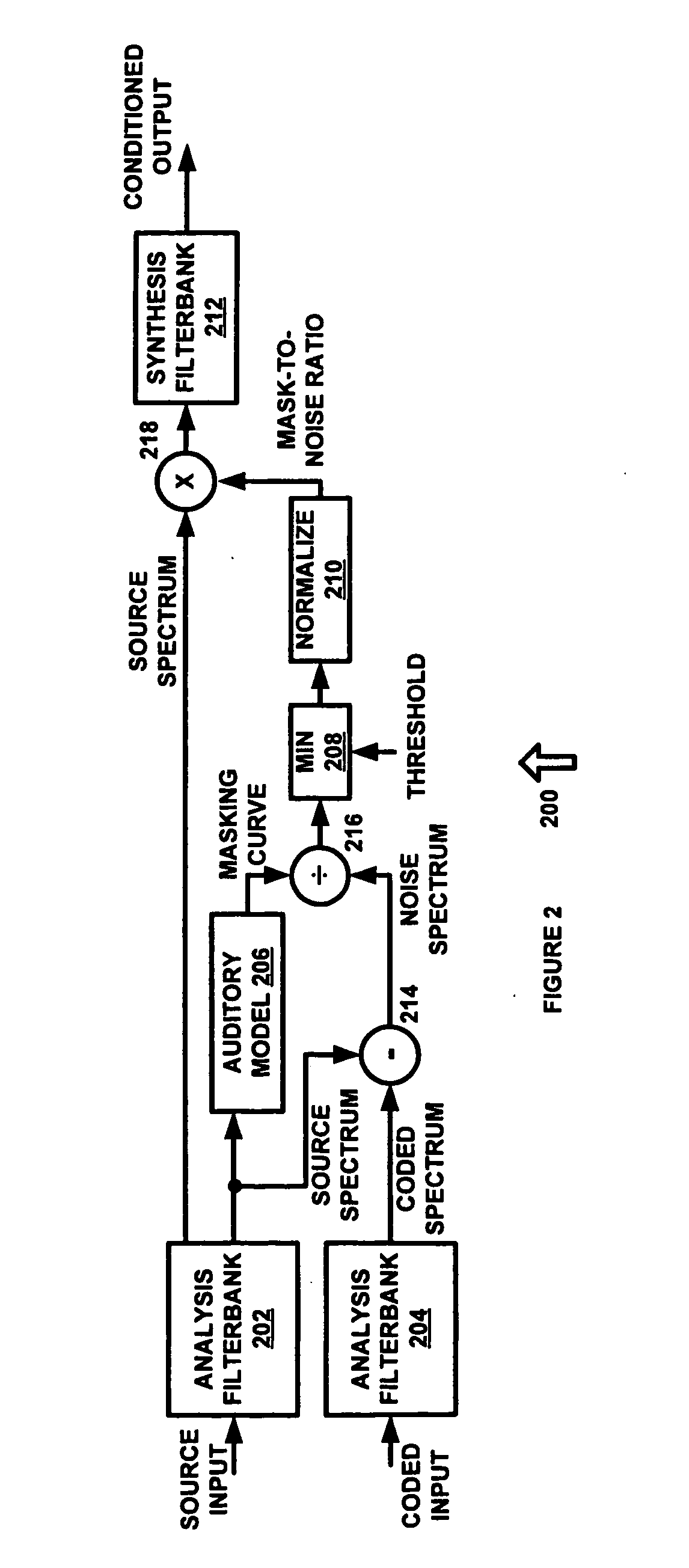Codec conditioning system and method
a codec and conditioning system technology, applied in the field of audio coder decoders, can solve the problem of lessening the level of percevable distortion
- Summary
- Abstract
- Description
- Claims
- Application Information
AI Technical Summary
Benefits of technology
Problems solved by technology
Method used
Image
Examples
Embodiment Construction
[0018] In the description that follows, like parts are marked throughout the specification and drawings with the same reference numerals. The drawing figures might not be to scale and certain components can be shown in generalized or schematic form and identified by commercial designations in the interest of clarity and conciseness.
[0019] In low data rate audio coding, it is common for the number of bits required to transparently code a given audio frame to exceed the number of bits available for that frame. That is, more bits are required to keep the quantization noise below the human auditory system's masking threshold than are allocated. This means that quantization noise can now be perceptible and artifacts can potentially be heard.
[0020] When transparent coding of audio frames requires more bits than are available, the audio coder's bit allocation process must distribute a limited number of bits among many frequency bands. This bit allocation process is extremely important, a...
PUM
 Login to View More
Login to View More Abstract
Description
Claims
Application Information
 Login to View More
Login to View More - R&D
- Intellectual Property
- Life Sciences
- Materials
- Tech Scout
- Unparalleled Data Quality
- Higher Quality Content
- 60% Fewer Hallucinations
Browse by: Latest US Patents, China's latest patents, Technical Efficacy Thesaurus, Application Domain, Technology Topic, Popular Technical Reports.
© 2025 PatSnap. All rights reserved.Legal|Privacy policy|Modern Slavery Act Transparency Statement|Sitemap|About US| Contact US: help@patsnap.com



